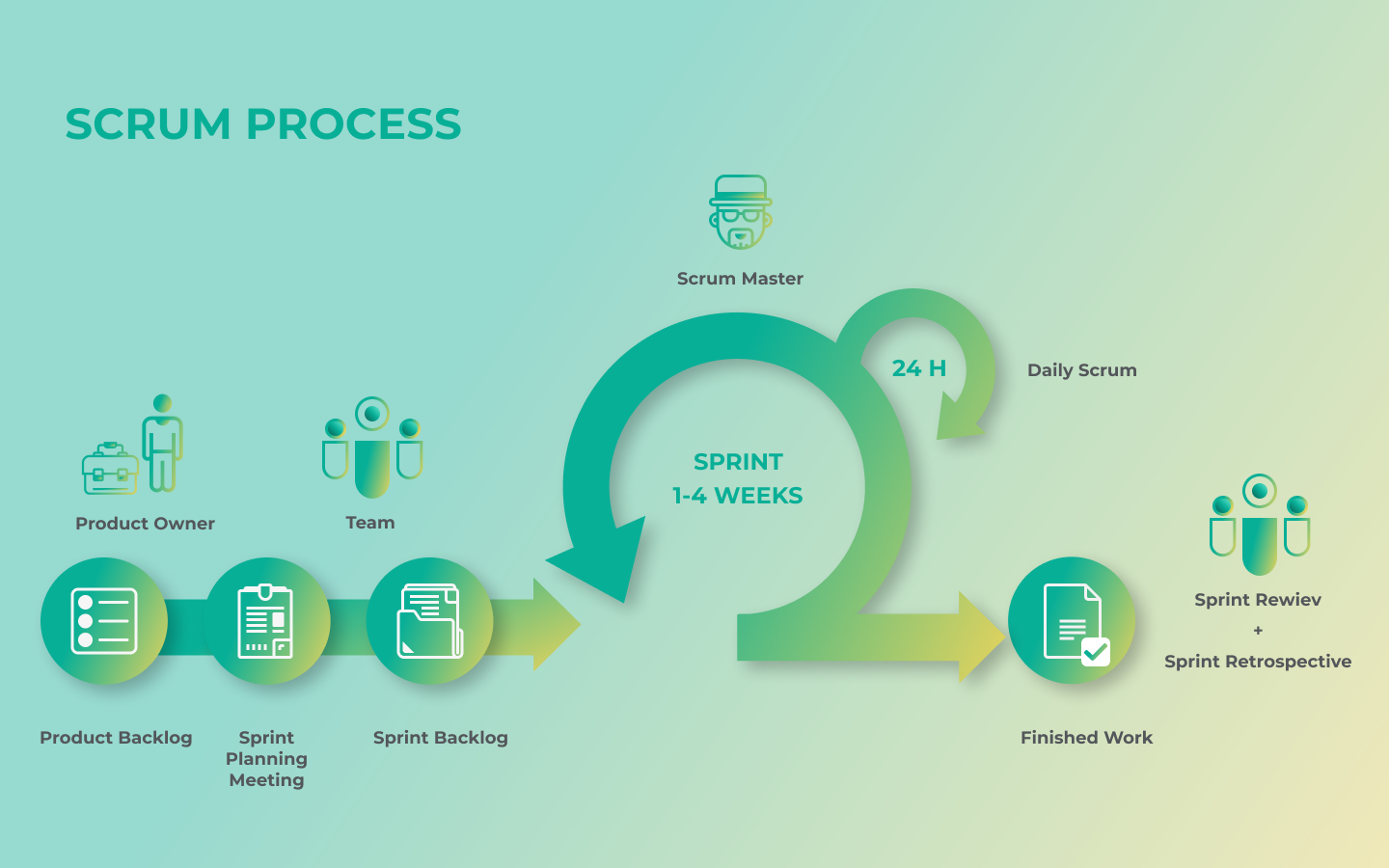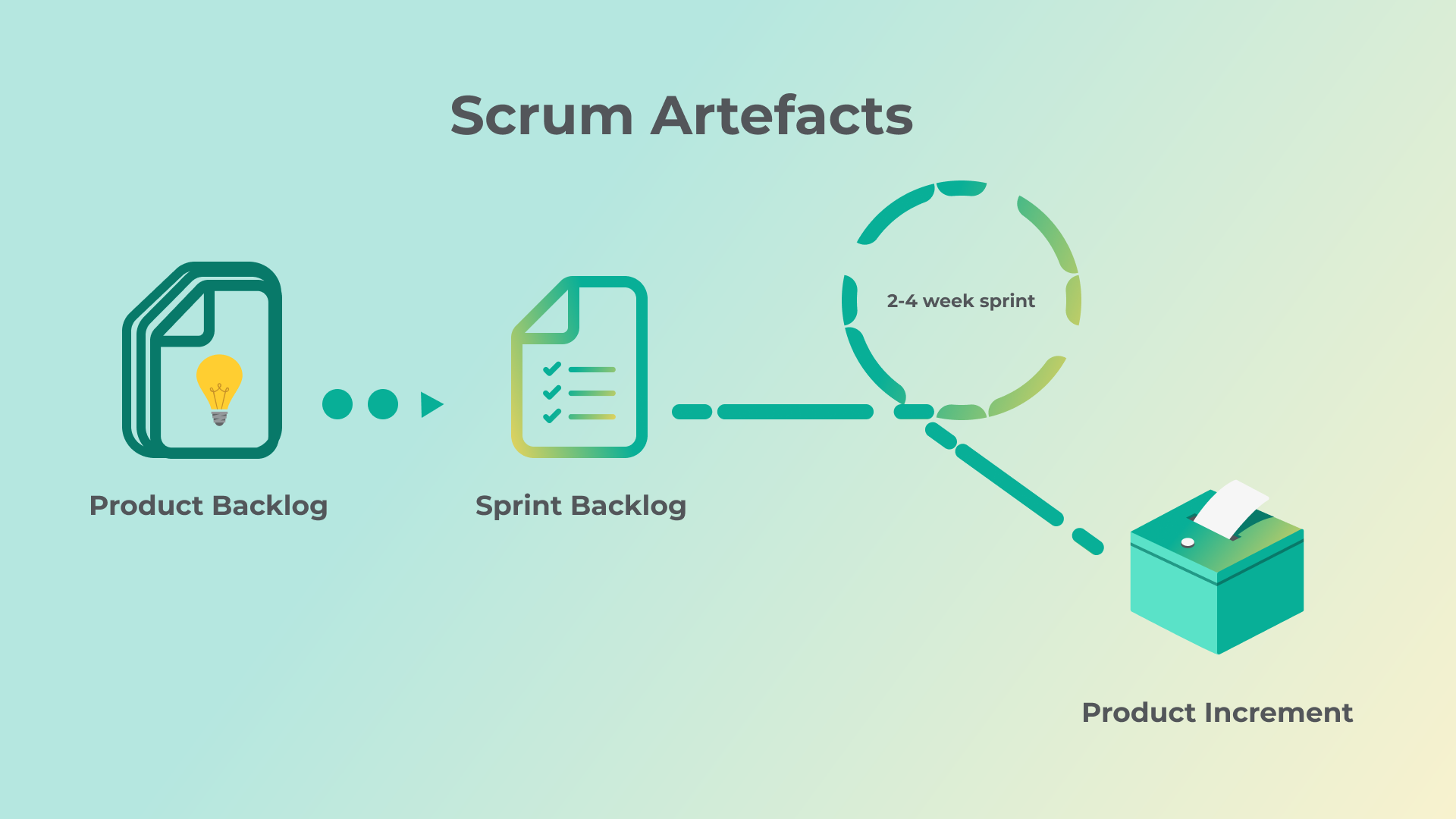How to Write User Stories: Step-by-Step Guide with Examples
Need help writing user stories? Our guide provides examples, a template, and clear steps to create effective user stories for agile projects.
November 4, 2022
In the world of Agile project management, scrum artifacts play a crucial role in ensuring efficient communication and transparency within a team. These artifacts in scrum, also known as artefact scrum, are essential tools that help teams organize and track their progress during a project. In this article, we will delve into the importance of scrum artifacts, how to use them effectively, and what are the artifacts of scrum that every team should be familiar with.
Scrum artifacts are essential tools in Agile software development, providing key information that helps the Scrum team and stakeholders understand the progress and quality of the project. They ensure transparency, enabling everyone involved to inspect and adapt the process effectively. The main Scrum artifacts include the Product Backlog, Sprint Backlog, and Increment. These artifacts represent the work or value that is continuously assessed and improved throughout the development process.

The Product Backlog is a prioritized list of all the features, enhancements, and bug fixes that need to be addressed in a product. It is maintained by the Product Owner and is continuously updated based on feedback and changing requirements. The Product Backlog ensures that the Scrum team always has a clear understanding of what needs to be done next, providing a foundation for effective sprint planning.
The Sprint Backlog is a subset of the Product Backlog, consisting of the tasks and items the Scrum team commits to completing in a specific sprint. It is created during the sprint planning phase and serves as a detailed plan for the development team's work. The Sprint Backlog is updated daily during the Daily Scrum meetings, allowing the team to track progress toward the sprint goal and make necessary adjustments.
An Increment is the sum of all the Product Backlog items completed during a sprint, plus the value of the increments from all previous sprints. It must meet the "Definition of Done" to ensure it is fully functional and ready for release. The Increment represents a tangible step forward in the project, providing a basis for stakeholders to review and adapt the next steps. The goal is to have a potentially shippable product increment at the end of each sprint, reinforcing the iterative and incremental nature of Agile development.
The Burndown Chart is a graphical representation that shows the amount of work remaining versus the time left in the sprint. It provides the Scrum team and stakeholders with a clear view of progress and potential roadblocks. By tracking daily progress, the Burndown Chart helps the team stay on track to meet the sprint goal and allows for quick adaptation if issues arise. This transparency enhances the team's ability to manage their workflow efficiently and ensure timely delivery of the product increment.
The Definition of Done is a critical Scrum artifact that ensures quality and completeness of work. It is a shared understanding among the Scrum team of what it means for a backlog item to be considered finished. This definition includes criteria such as code reviews, testing, and documentation requirements. By adhering to the Definition of Done, the Scrum team ensures that each increment is potentially shippable and meets the necessary standards for quality and functionality. This artifact fosters a consistent and clear approach to development, reinforcing the commitment to deliver high-value software.

The first step is to establish the Product Backlog. This artifact is a comprehensive list of all desired work on the project, managed by the Product Owner. Each item in the product backlog, known as a product backlog item (PBI), is prioritized based on value, risk, and necessity. This ensures that the most critical tasks are addressed first, aligning the development process with stakeholder expectations and project goals.
Next, during the Sprint Planning phase, the Scrum team selects items from the product backlog to include in the Sprint Backlog. This artifact details the specific tasks the development team will work on during the sprint. By breaking down the product backlog items into manageable tasks, the sprint backlog helps the team focus on clear, actionable objectives.
As the sprint progresses, the Increment artifact represents the sum of all completed product backlog items during the sprint. Each increment must meet the team’s Definition of Done, a shared understanding of what it means for work to be complete. This ensures that each increment is potentially shippable and meets the required quality standards.
To monitor progress, the team uses a Burndown Chart. This visual tool tracks the amount of work remaining versus time, helping the team stay on schedule and identify any potential issues early. The burndown chart enhances transparency and allows for timely adjustments to keep the project on track.
Lastly, the Definition of Done is a crucial artifact that ensures all increments are releasable and meet agreed-upon criteria. This artifact is key for maintaining quality and consistency across the development process.
Incorporating Scrum artifacts into your workflow is crucial for the successful implementation of the Scrum framework. These artifacts, including the Product Backlog, Sprint Backlog, Increment, Burndown Chart, and Definition of Done, provide a structured and transparent approach to managing projects. They help the Scrum team stay focused on their goals, ensure quality, and adapt to changes effectively. By leveraging these artifacts, decision-makers can enhance project management efficiency, improve team collaboration, and deliver higher-quality products that meet stakeholder expectations. Embracing Scrum artifacts is a strategic move towards achieving project success and organizational growth.
Bleiben Sie auf dem Laufenden mit allem, was Sie wissen müssen.
Need help writing user stories? Our guide provides examples, a template, and clear steps to create effective user stories for agile projects.
Learn how to calculate and interpret sprint velocity in Scrum. Find out common challenges and best practices to enhance your team's performance.
Understand the essential goals of sprint planning: objectives, team collaboration, backlog prioritization, and more. A guide for executives.